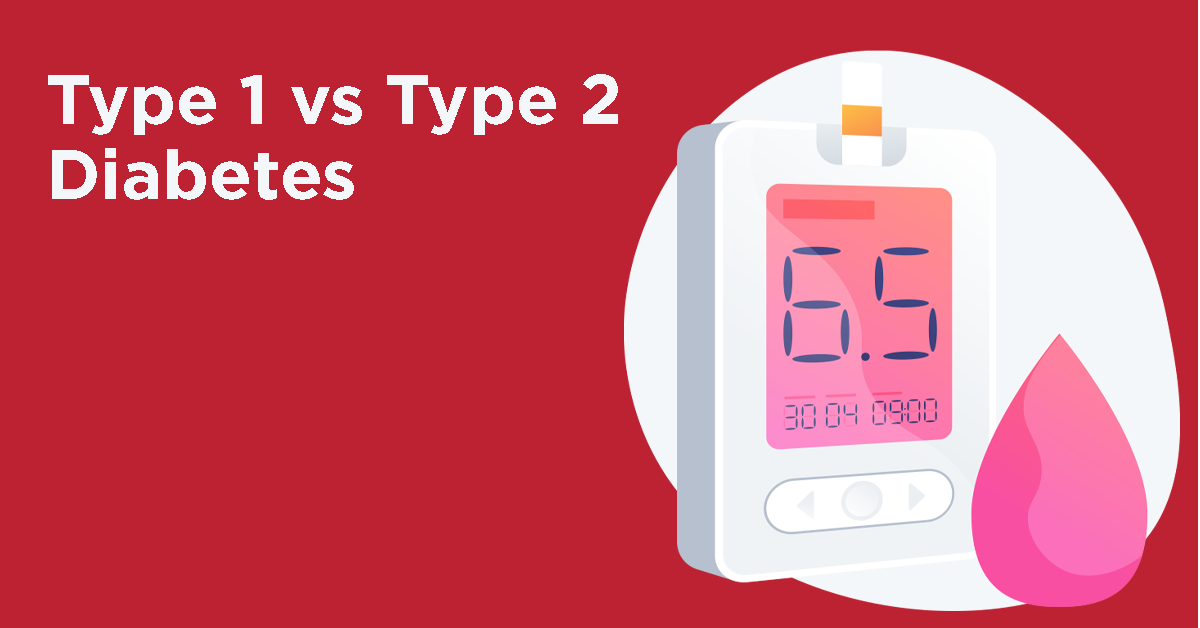Type 1 vs Type 2 Diabetes

Diabetes is a global issue, affecting hundreds of millions of people worldwide. Many people describe diabetes as being a pandemic. It is a chronic disease that is associated with uncharacteristically high levels of glucose in the blood. The absence or inadequate production of insulin (produced by the pancreas) that lowers blood sugar level causes diabetes. Diabetes may also be caused by the body’s incapability to utilize the produced insulin. It can cause obesity and hypertension. It reduces the level of HDL or good cholesterol in the blood and elevates the production of triglycerides which are harmful to one’s health. Moreover, it can instigate a long line of generations of diabetes patients in a family.
There are two widely known diabetes types
- Type 1 diabetes or insulin-dependent diabetes or juvenile-onset diabetes
- Type 2 diabetes or non-insulin-dependent diabetes or adult-onset diabetes
There are, indeed, quite a few similarities between the two. They even have deceivingly similar names. But T1D and T2D are actually very different diseases, with different causes, treatments, and outlooks. You can’t go from type 1 diabetes to type 2 or vice versa. In the worst case, however, it is possible to have both at the same time.
Click to know more about the Diabetic World
Type 1
Type 1 diabetes is an autoimmune disease which means the body’s immune system destroys the cells in the pancreas that make insulin. This results in having little or no insulin in the body. Insulin is needed to help glucose enter cells for energy. Without insulin, glucose builds up in the blood. This causes high blood glucose or high blood sugar. In this disease, daily injections of insulin are needed. Also affected are those who lose their pancreas. Once the pancreas has been removed (because of cancer, for example), diabetes type 1 is always present
Causes
Scientists don’t exactly know what causes Type 1 diabetes. However, it’s likely that genetics and environmental factors, such as certain types of viruses, play a role.
Symptoms
Type 1 diabetes symptoms can come on suddenly and may include:
- Bedwetting
- Blurry vision
- Frequent urination
- Increased appetite and/or thirst
- Mood changes, irritability
- Tiredness and weakness
- Unexplained weight loss
Treatment
There’s no cure for Type 1 diabetes. Treatment consists of injecting insulin with a syringe or insulin pen or infusing insulin via an insulin pump device. Most people with Type 1 diabetes need to check their blood sugars, at a minimum, four times a day, but six to ten times a day is more likely. A healthy eating plan that consists of counting and controlling carbohydrate intake is generally a mainstay for those with Type 1 diabetes. If desired, a person can base meal-time insulin doses on how many carbs they choose to eat at a meal. Physical activity is encouraged but may require adjustments to insulin doses and/or carb intake to prevent hypoglycemia (low blood sugar).
Type 2
This type of diabetes is far more common than type 1 and makes up most of the diabetes cases. It usually occurs in adulthood, but young people are increasingly being diagnosed with this disease. In type 2 diabetes, the pancreas still makes insulin, but the tissues do not respond effectively to normal levels of insulin, a condition termed insulin resistance. Over many years the pancreas will decrease the levels of insulin it secretes, but that is not the main problem when the disease initiates. Many people with type 2 diabetes do not know they have it, although it is a serious condition.
Causes
A combination of genetics and lifestyle factors can cause Type 2 diabetes by causing insulin resistance. In addition, being overweight, not doing enough physical activity, and eating an unhealthy diet of processed and sugary foods can raise your risk.
Symptoms
They include but are not limited to:
- Frequent bladder infections
- Skin infections that don’t heal easily
- Excess thirst
- Frequent urination
- Weight loss
- Blurred vision
- Nausea and vomiting
- Extreme weakness and fatigue
- Irritability and mood changes
- Dry, itchy skin
- Tingling or loss of feeling in the hands or feet
Some people who have Type 2 diabetes don’t have symptoms. Check out some mild Symptoms of type 2 diabetes which you may not notice.
Treatment
With type 2 diabetes there’s a greater range of treatment options. You might be told just to monitor your diet, get more exercise, and lose some weight. However, most people with type 2 diabetes also take pills that prompt the body to make more insulin and/or lower blood sugar levels. If these efforts don’t work and the disease gets worse, you may need to turn to insulin injections.
While Type 2 and Type 1 differs in nature, where they often meet is in complications. Prolonged levels of high blood sugar in anyone with diabetes can lead to long-term complications. These range from heart disease, kidney failure, foot, eye, and nerve damage to skin disorders. You can schedule routine appointments with an endocrinologist to regulate blood sugar and monitoring insulin levels closely.
Regency has some of the best endocrinologists under their wings. If you believe that you may have Type1/Type 2 diabetes or are at risk for the disease, visit the hospital for a diagnosis today

 Call-an-Ambulance
Call-an-Ambulance



